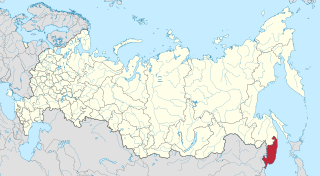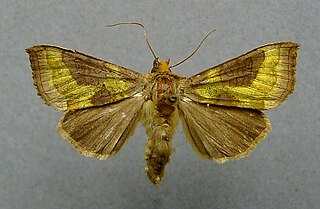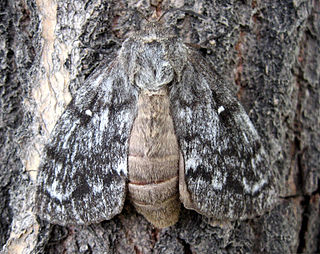
Syringa is a genus of 12 currently recognized species of flowering woody plants in the olive family or Oleaceae called lilacs. These lilacs are native to woodland and scrub from southeastern Europe to eastern Asia, and widely and commonly cultivated in temperate areas elsewhere.

Primorsky Krai, informally known as Primorye, is a federal subject of Russia, part of the Far Eastern Federal District in the Russian Far East. The city of Vladivostok on the southern coast of the krai is its administrative center, and the second largest city in the Russian Far East, behind Khabarovsk in the neighbouring Khabarovsk Krai. Primorsky Krai has the largest economy among the federal subjects in the Russian Far East, and a population of 1,845,165 as of the 2021 Census.

Adenophora is a genus of flowering plants in the family Campanulaceae, the bellflowers. Plants of this genus are known commonly as ladybells. Most of the species in the genus are native to eastern Asia, with a few in Europe. Many are endemic to either China or Siberia.

The Amur hedgehog, also called the Manchurian hedgehog, is a hedgehog similar to the European hedgehog in appearance and behaviour, although it is more lightly coloured. It is native to Amur Oblast and Primorye in Russia, Manchuria in China, and the Korean Peninsula. Like other hedgehogs, it uses scent and hearing while looking for prey, and the name "hedgehog" refers to the pig-like grunts it makes as it forages.

Atractylodes is a genus of Asian flowering plants in the family Asteraceae.

Lycopus is a genus of herbaceous plants in the family Lamiaceae. The many species are known as water horehound, gypsywort, and bugleweed and are native to Europe, Asia, Australia, and North America. The species are most often found in wetlands, damp meadows, and stream banks. Some of the wetland species have become endangered.

Leonurus (motherwort) is a genus of flowering plants in the family Lamiaceae. It is native to Europe and Asia, naturalized in New Zealand, Hawaii, New Caledonia, and much of North and South America.

The Asian parti-colored bat is a species of parti-coloured bat. An adult Asian parti-colored bat has a body length of 6–7 cm (2.4–2.8 in), a tail of 4.3–4.5 cm (1.7–1.8 in), and a wing length of 5 cm (2.0 in). Asian parti-colored bats are distributed across East Asia, from Taiwan through eastern China, eastern Mongolia and Russia (Siberia) to the Korean Peninsula and Japan.
Oecomys superans, also known as the large oecomys or foothill arboreal rice rat, is a species of rodent in the genus Oecomys of family Cricetidae. It is found along the eastern slope of the Andes in southern Colombia, Ecuador, and Peru and east into the Amazon basin, including parts of Brazil. Its distribution is poorly known, and it may also occur further south, into Bolivia.

Prunus maackii, commonly called the Manchurian cherry or Amur chokecherry, is a species of cherry native to Korea and both banks of the Amur River, in Manchuria in northeastern China, and Amur Oblast and Primorye in southeastern Russia. It used to be considered a species of Prunus subg. Padus, but both morphological and molecular studies indicate it belongs to Prunus subg. Cerasus.

Panthea coenobita is a species of moth of the family Noctuidae. It is found in North Europe, East Europe and Southern Europe, the central and northern European part of Russia, Japan, Korea, northern China, the Russian Far East, southern and western Siberia and Turkey.

Katha depressa, the buff footman, is a moth of the family Erebidae found in Asia and Europe. It was first described by Eugenius Johann Christoph Esper in 1787.
Pachista is a genus of moths in the family Geometridae described by Prout in 1912. It consists of only one species, Pachista superans, first described by Arthur Gardiner Butler in 1878, which is found in China, Japan and Korea.

Diachrysia stenochrysis is a species of moth of the family Noctuidae. It is found in Europe, the Caucasus, the Far East, Primorye, Ussuri, Korea, Manchuria, Mongolia, Transbaikalia, Siberia and Japan.

Heliothis ononis, the flax bollworm, is a moth of the family Noctuidae. The species was first described by Michael Denis and Ignaz Schiffermüller in 1775. It is found in China, Kazakhstan, central Asia, northern Mongolia (Khangai), the Russian Far East, the Korean Peninsula, southern European part of Russia, southern and central Europe, southern and eastern Siberia and Turkey. In North America it is found from south-central Manitoba west to British Columbia, north to the Northwest Territories and Yukon and Alaska and south to Colorado.

Nycteola degenerana, the sallow nycteoline, is a moth of the family Nolidae. The species was first described by Jacob Hübner in 1799. It is found in Europe, from southern Fennoscandia to Spain, Italy and the Balkans. Outside of Europe it is found in China, Japan, the Korean Peninsula, the Russian Far East, southern Siberia, Turkey and the Ural.

The eastern water bat or Sakhalin bat is a species of mouse-eared bat. It was for a long time considered to be a subspecies of Myotis daubentonii.

Dendrolimus superans, also called the white-lined silk moth, Sakhalin silk moth, Japanese hemlock caterpillar, Siberian silk moth, Siberian moth, Siberian conifer silk moth, Siberian lasiocampid or larch caterpillar, is a moth of the family Lasiocampidae.
Archips pulchra is a species of moth of the family Tortricidae. It is found in China (Heilongjiang), South Korea, Japan and Russia (Primorye).

Archips subrufanus is a species of moth of the family Tortricidae. It is found in China, Korea, Japan and Russia (Primorye).

















